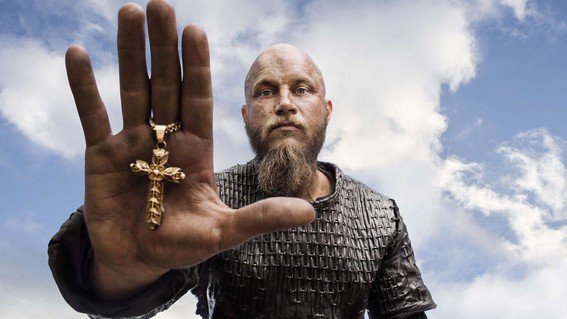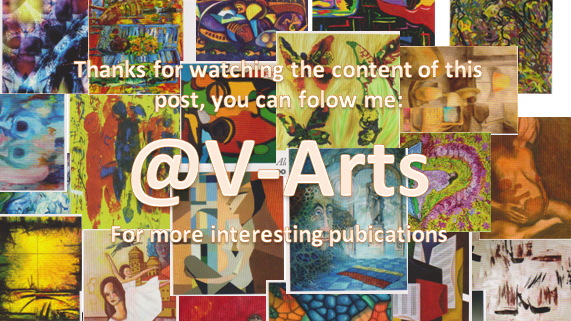Interesting! 10 things you have to know about Viking art

The Nordic lifestyle goes far beyond brave and epic battles or huge blond beards; art predominated as in no other culture.
The most awaited day for any Nordic child was the dinner in which they would be named warriors. That night, the parents put on the best clothes and together with the child attended a ceremony in which the jarl in turn gave them permission to become warriors, farmers and builders, as well as carpenters and travelers. In this ostentatious ceremony all those belonging to the community gathered and among drinks, dancing and food, they gathered the children that would be awarded.
The jarl looked at them and gave them a bracelet in the shape of a snake with two wolf heads. While they waited in a row, they were given a glass or horn with an alcoholic beverage. Once with their drinks in hand, the boss was ready to give some words that highlighted the skills of the children as well as their families and how much they had contributed to the community. Before this, the children were paying attention and excited, they were preparing to take their bracelet. The majority oscillated between the 10 and 13 years, reason why they were completely conscious of which would be their functions in future.
vikings
In this way, they passed in line to receive a bracelet that served as a representation of the legend of Sköll and Hati; two wolves that recreated repulsion and hatred, respectively. Both persecuted the Sun and the Moon, reason why the mortals feared that if that happened, the world would be filled with darkness. Therefore, to honor them, they wore said bracelet with the insignia of both wolves. In this way, the Nordic children allowed the jarl to put the bracelet on them and immediately the wife of the ruler approached slowly and kissed them on the lips. Then they were ready to be authentic Vikings.
This type of bracelets were very coveted by the Nordic people. In addition to having a strong symbolic charge, it was a hand-carved piece that involved several hours of work, even days, so they were considered objects of great value. They were even the most treasured treasures of the Nordic community, so each of these bracelets is considered art. In Nordic society, art was divided into 6, so each of these branches has to its credit beyond bracelets.
history
Viking art was used in everyday life
They did not have a trade dedicated to art as such. They made vessels, bracelets and other objects that were typical of everyday life. The boats, the jewels, the adornments, and even the decoration of the home were made as a unique piece. There was no way that two children wore the same bracelet design or that the vases in the homes were exactly the same. The looms, the swords and even the shields had their own design.
art
The most commonly used materials were wood, metals and stone
Thanks to the immense forests that surrounded the territory, the carpenters could take wood of different types, as well as of different width and they used them for furniture, boats and of course, their homes. However, the latter were the most important in terms of art, since each ship had a special carving that was made with a chisel. Similarly, wood that was molded into a shield used to be painted with colors; nevertheless, some have been found that contain paintings a little better defined.
Interesting! 10 things you have to know about Viking art
Textile art was of utmost importance
Women who were not squires used to stay at home to make clothes and blankets for their husbands, who left for battles. They wove garments for the humid climates they constantly faced. They usually used looms in which they made designs with threads. From the simplest to the most complicated, they were done exclusively and in a traditional way.
culture
They made sculptures and engravings on stones
Although most of the engravings have been found in huge stones, there are also vestiges in relatively small stones. Most were used to honor the dead, but according to the design, people could know how much they had done in life. So if the stone was adorned with colors and figures, it was a man who in life had been a powerful warrior or a fighter of great value. On the other hand, those rocks that had few symbols and were basically presented in a single color belonged to men or women who had not done much for their people.
vikings
Wood and bronze marked the first stage of Viking art
It is called Broa-Oseberg and is derived from the name of the city where a tomb was found in which a woman was. In it there were diverse works of art made of bronze that resembled the cracks of horses. As in boats, animals or figures predominated, so it was common to find heads of animals carved in bronze and wood in these tombs. In this period the creation of the bracelets that were awarded to the children is centered.
History Lines and geometry were important in Viking art The second stage of Nordic art is called Borre due to a funeral ship that was found in the town of the same name. This style is very easy to identify, but it is one of the most difficult to do since it is characterized by following a mainly braided or chained pattern. In this period the metal was used as the main material, with which they made knots to reinforce some structures. In the same way, they used it to decorate jewelry and home decorations. art
The third stage is dominated by silver We refer to the so-called Jelling. In this stage the silver was molded like a dragon or a snake. The first finding of this kind occurred in Denmark. Some managed to make heads of animals whose jaw was always open, this as a sign of ferocity ... only then they managed to know who was the strongest or violent warrior. Sometimes they put two bodies together to avoid identifying who it belonged to. It was used to decorate homes or as jewelry of a very tiny size. Interesting! 10 things you have to know about Viking art Animals always played an important role in Viking life However, it was until the time called Mammen that the forms of animals gained much more strength and meaning. The materials varied, so you could make figures with fabrics, stone and threads, or venture into other elements that complement the piece of art.
Each time they were more realistic and looked better, but at the same time they were less human, that is, the animals predominated in each of the pieces. culture Runes are also an art In the time of the Vikings there were people who were dedicated to reading the future with the runes, which are stones carved with symbols that reflect the life of those who assist in reading their luck. These enter the Ringerike stage.
Most of the art that belongs to this style is characterized by making ornaments for clothing and jewelry. Many times animal parts were used to create geometric shapes that visually looked completely different. Vikings The decoration of the home involved more than furniture It is called Urnes style and is characterized by the carving of doors and windows in which animals were shaped very thin and stylized figures. Most carved their doors to stop the entry of evil spirits, also served to indicate who lived in that home: a warrior, a fisherman or a combination of both. History Although for the Vikings there was no exact definition of art, they embedded in their daily life some techniques that few cultures had.
From the handling of materials such as silver, bronze and iron to the manipulation of rocks, plants and fabrics, the Vikings had a fascination for figures of unique shapes, styles that were rarely seen elsewhere and, of course, maintained a close relationship with nature and protection by their deities. art
